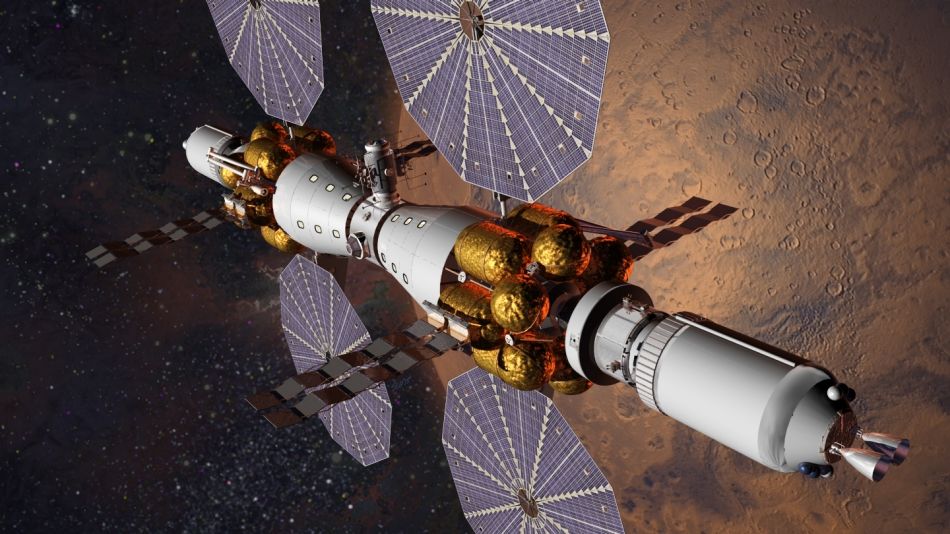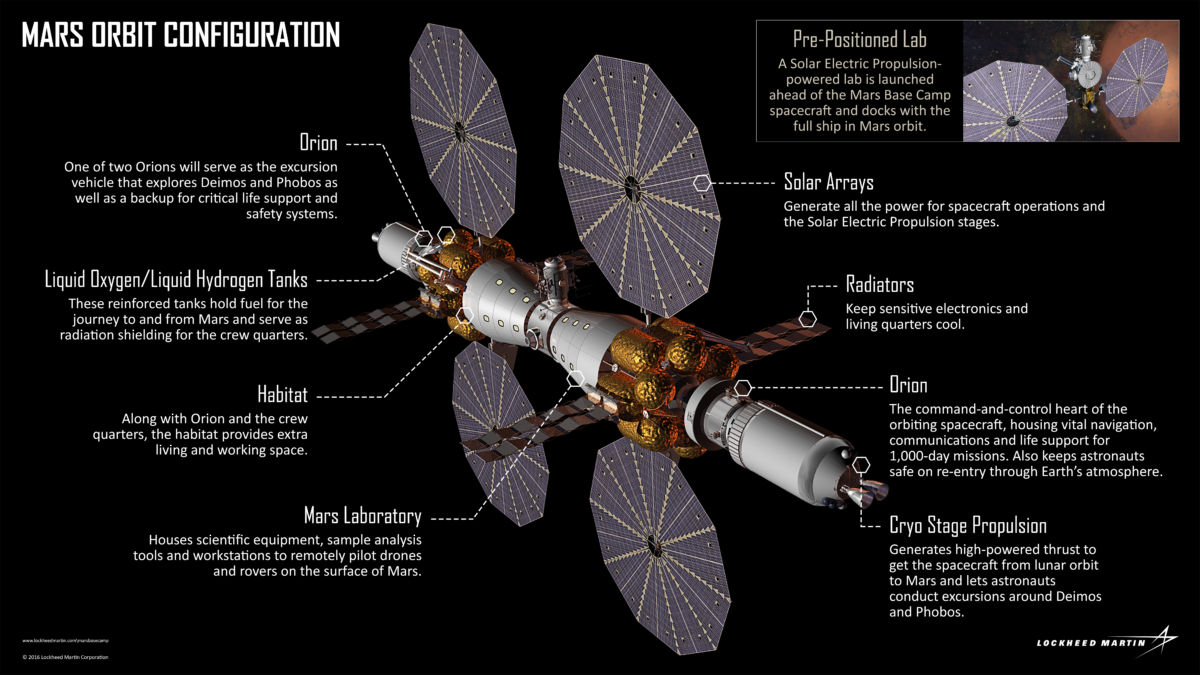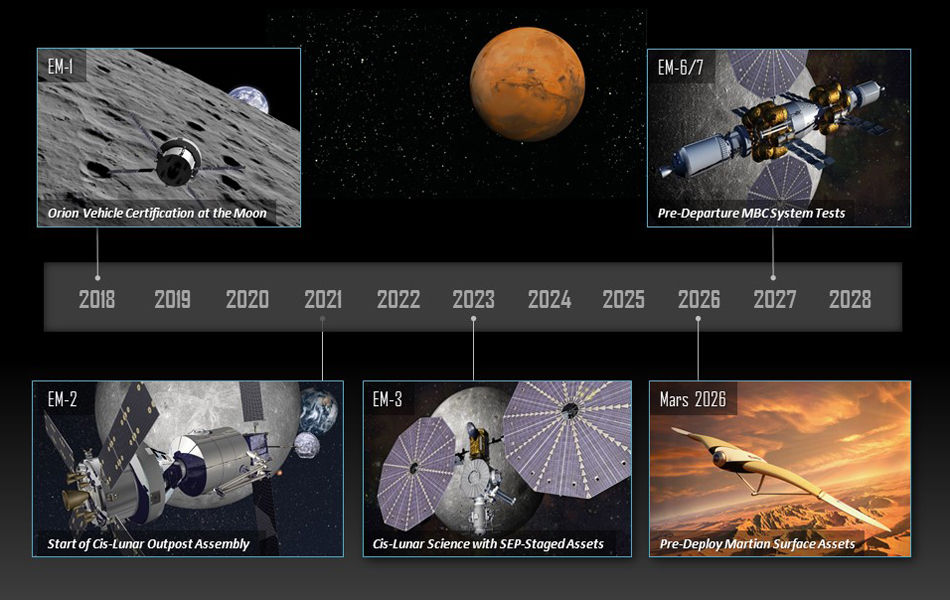Humans to Mars by 2028? Check Out Lockheed Martin's Red Planet 'Base Camp' Idea


Lockheed Martin has launched its campaign to establish a "Mars Base Camp" — a vision for sending humans to Mars by 2028.
In its Mars Base Camp concept video, the aerospace company Lockheed Martin lays out a plan that would transport astronauts from Earth to a Mars-orbiting science laboratory, where they could perform real-time scientific exploration, analyze Martian rock and soil samples,and confirm the ideal place to land humans on the surface.
Lockheed Martin foresees launching this orbiting science station in 2028, setting the stage for a human landing mission in the 2030s.
Key elements
The elements of Mars Base Camp are:
- Orion: NASA's in-development crew capsule, built with deep-space life support, communications and navigation capabilities;
- Space Launch System: NASA's super-heavy-lift rocket, designed to send critical labs, habitats and supplies to Mars;
- Habitats: Deep-space habitats will give astronauts room to live and work on the way to Mars;
- Solar Electric Propulsion: Based on technology already in place on satellites, this advanced propulsion will pre-position key supplies in Mars orbit.
Interplanetary ship
As detailed by Lockheed Martin, the major components of the architecture will be launched separately. Some will be pre-positioned in Mars orbit ahead of time.
Other components are assembled in Earth-moon space for the journey to Mars. Six astronauts would launch on Orion, which serves as the heart of the Mars Base Camp interplanetary ship.
To learn more about Lockheed Martin's Mars mission concept, visit: http://www.lockheedmartin.com/us/ssc/mars-orion.html.
Breaking space news, the latest updates on rocket launches, skywatching events and more!
Leonard David is author of "Mars: Our Future on the Red Planet," to be published by National Geographic this October. The book is a companion to the National Geographic Channel six-part series coming in November. A longtime writer for Space.com, David has been reporting on the space industry for more than five decades. Follow us @Spacedotcom, Facebook or Google+. Original story published on LeonardDavid.com.

Leonard David is an award-winning space journalist who has been reporting on space activities for more than 50 years. Currently writing as Space.com's Space Insider Columnist among his other projects, Leonard has authored numerous books on space exploration, Mars missions and more, with his latest being "Moon Rush: The New Space Race" published in 2019 by National Geographic. He also wrote "Mars: Our Future on the Red Planet" released in 2016 by National Geographic. Leonard has served as a correspondent for SpaceNews, Scientific American and Aerospace America for the AIAA. He has received many awards, including the first Ordway Award for Sustained Excellence in Spaceflight History in 2015 at the AAS Wernher von Braun Memorial Symposium. You can find out Leonard's latest project at his website and on Twitter.


